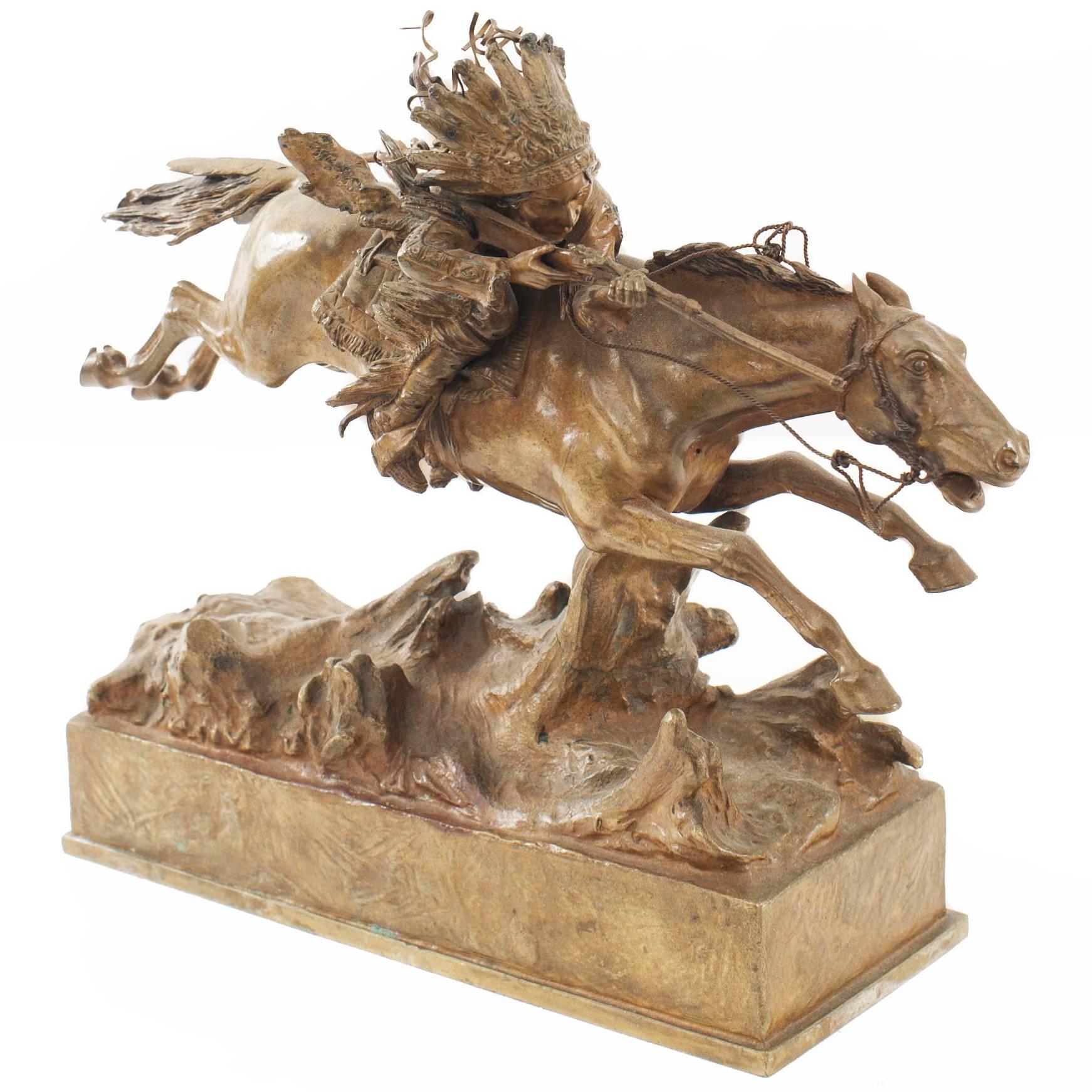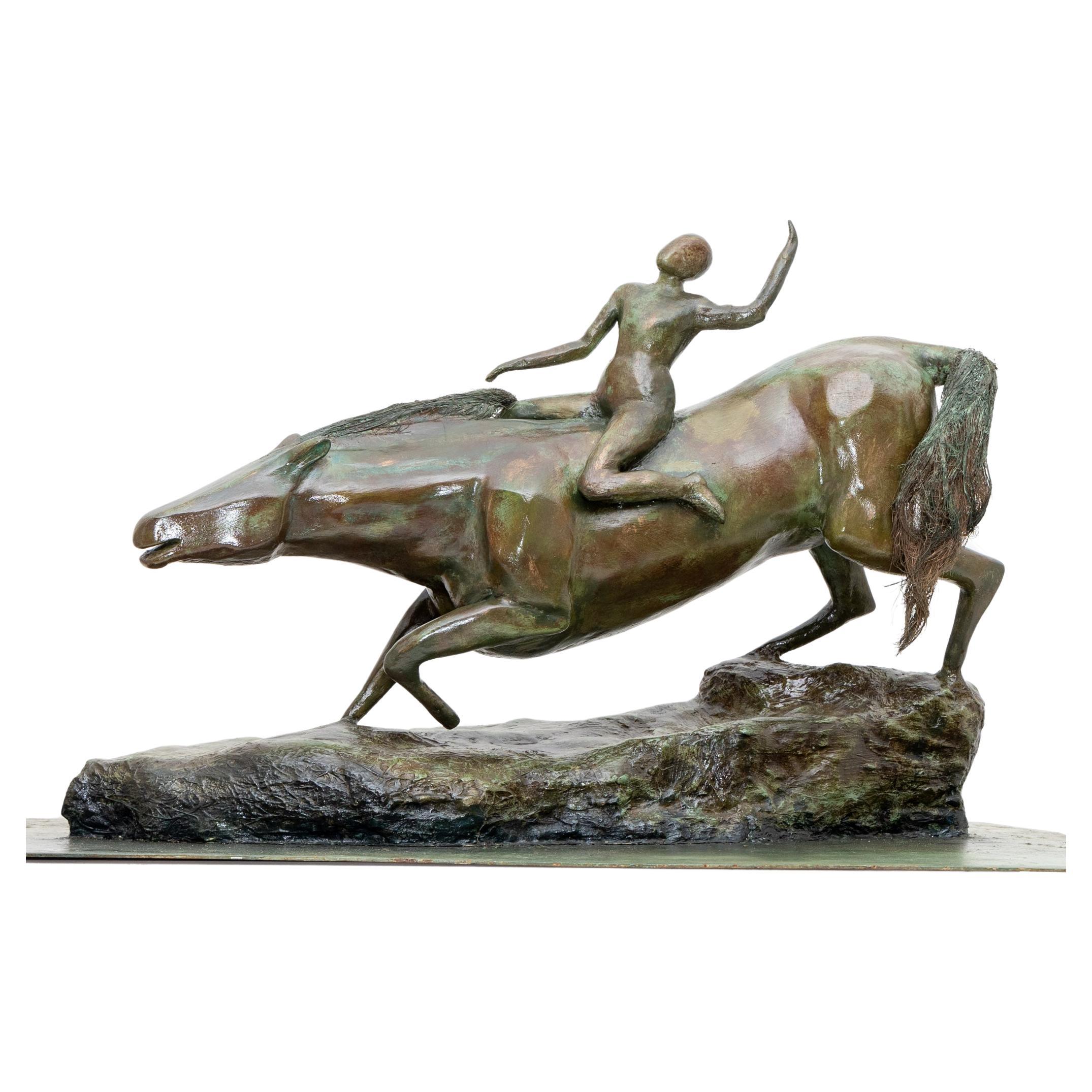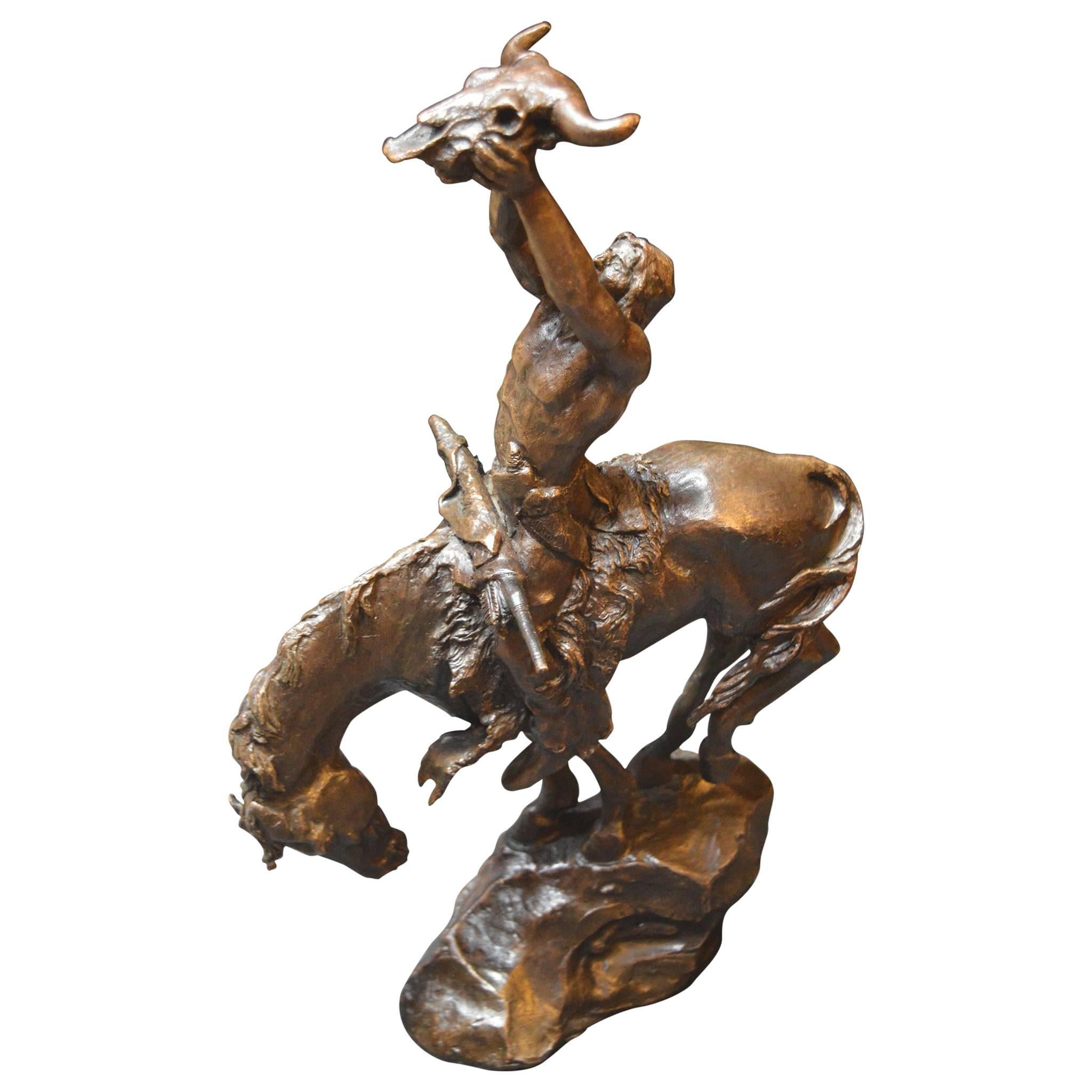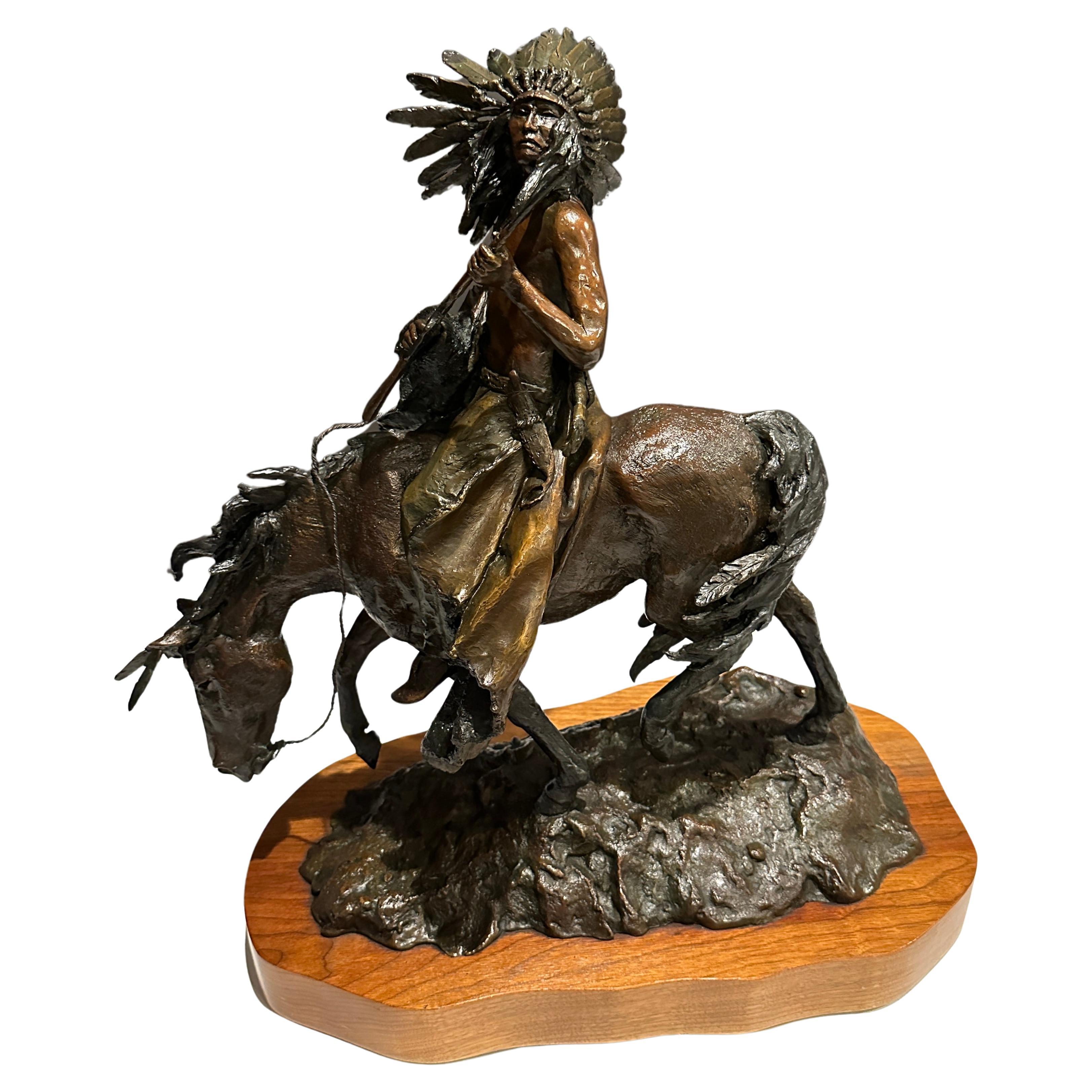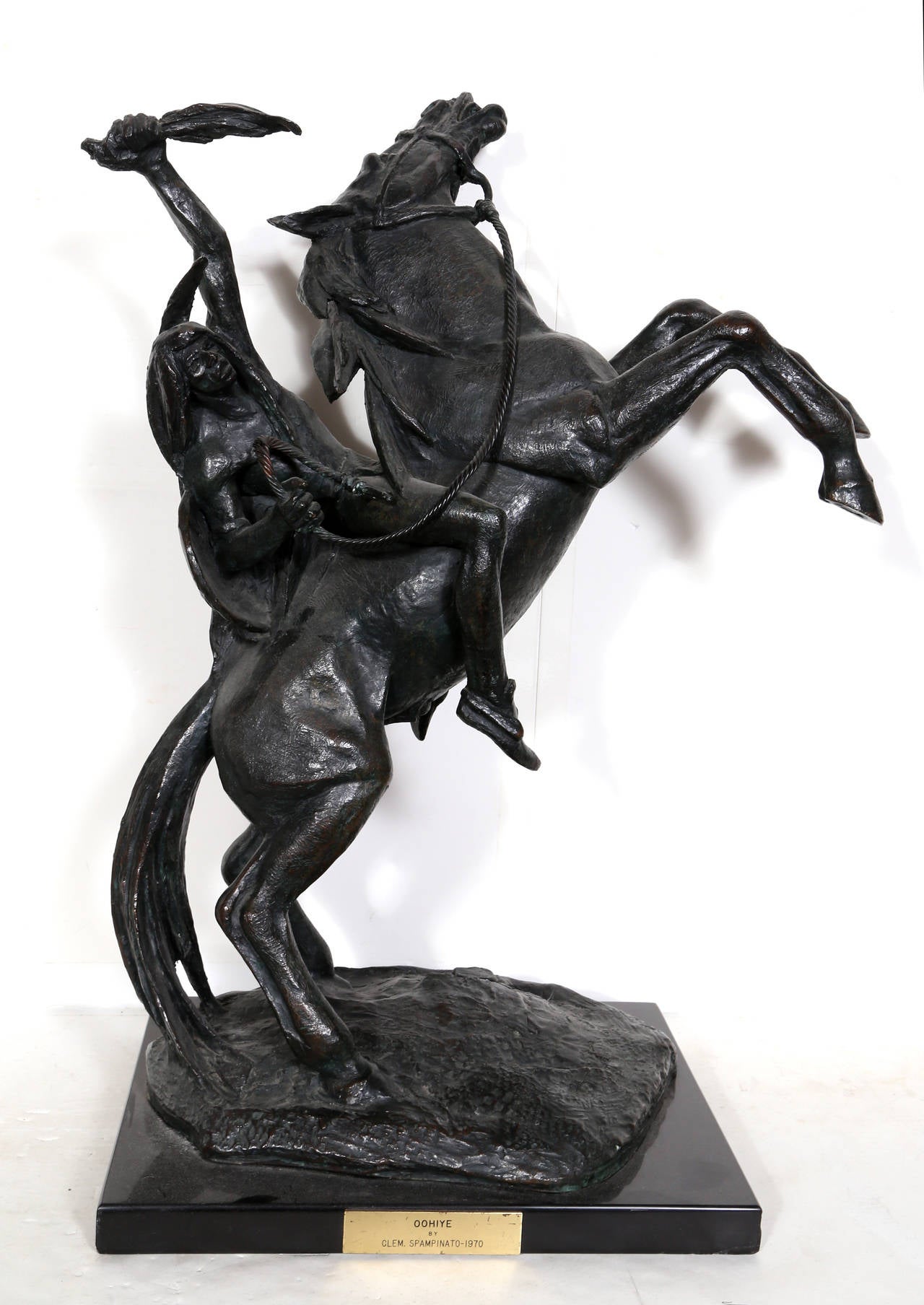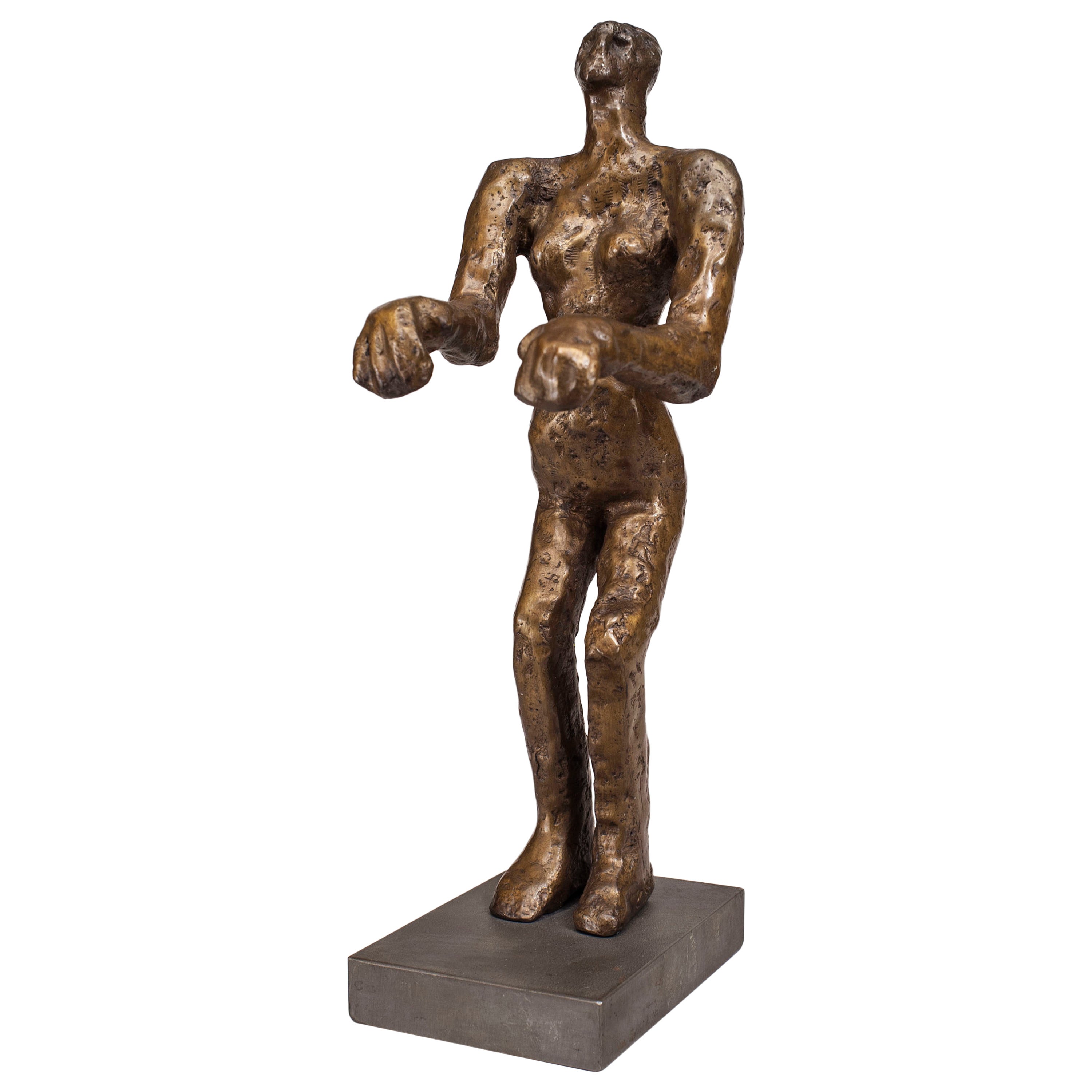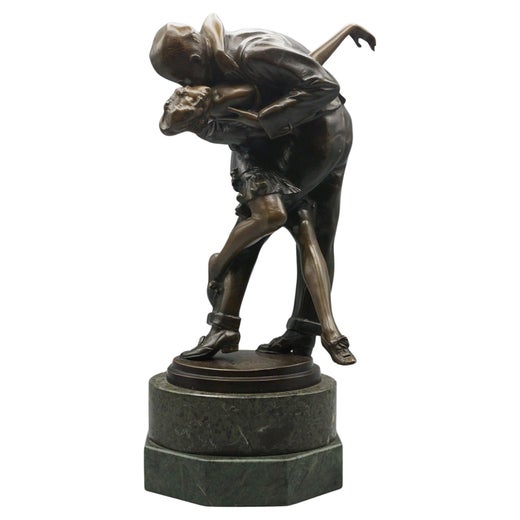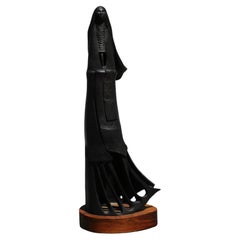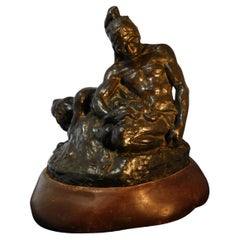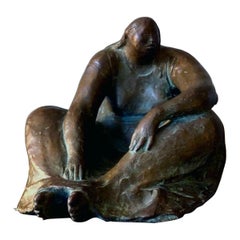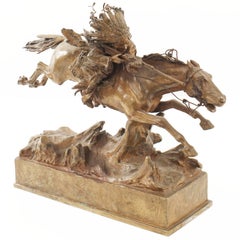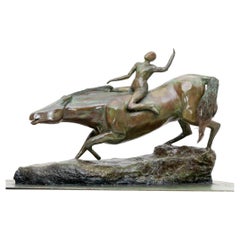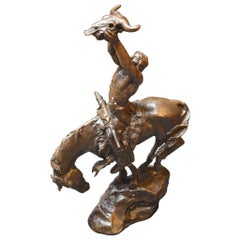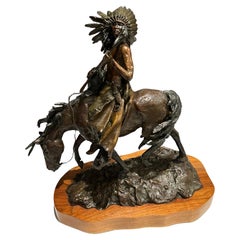Items Similar to Bruno Zach Deco Bronze Sculpture, 1925, Native American Subject
Want more images or videos?
Request additional images or videos from the seller
1 of 6
Bruno ZachBruno Zach Deco Bronze Sculpture, 1925, Native American Subject1925
1925
$9,000
£6,792.05
€7,775.87
CA$12,692.98
A$13,935.31
CHF 7,270.08
MX$168,636.69
NOK 91,119.20
SEK 85,858.25
DKK 58,044.82
About the Item
Beautifully cast deco Austrian bronze titled: “Indian Brave on Charging Horse.”
Sitz on a marble plinth. The figure has a cold painted buckskin colored shirt and pant.
Signed on base “B. Zach Argentor Wien.”
Measures: 19 1/2" long x 14 1/2" H x 4 1/2" wide not including the base.
Bruno Zach (1891-1945) was a sculptor known for his female subjects and more rarely
Native American subjects.
- Creator:Bruno Zach (1891 - 1935, Austrian)
- Creation Year:1925
- Dimensions:Height: 14.5 in (36.83 cm)Width: 19.5 in (49.53 cm)Depth: 4.5 in (11.43 cm)
- Medium:
- Movement & Style:
- Period:
- Condition:
- Gallery Location:Phoenix, AZ
- Reference Number:Seller: F16641stDibs: LU2749214653142
Bruno Zach
Bruno Zach was an Austrian art deco sculptor of Ukrainian birth who worked in the early-to-mid 20th century. He emigrated to Austria as a young man and studied at the Vienna Academy under sculptors Hans Bitterlich and Josef Müllner. He worked in Austria as well as in Germany. Famous for his Fine bronzes made for the Wiener Bronze, or Vienna Bronze manufactory, the Ukrainian-born Zach was best known for his figures of flirtatious, sexually liberated young women.
About the Seller
5.0
Gold Seller
Premium sellers maintaining a 4.3+ rating and 24-hour response times
1stDibs seller since 2024
39 sales on 1stDibs
Typical response time: 1 hour
- ShippingRetrieving quote...Shipping from: Phoenix, AZ
- Return Policy
Authenticity Guarantee
In the unlikely event there’s an issue with an item’s authenticity, contact us within 1 year for a full refund. DetailsMoney-Back Guarantee
If your item is not as described, is damaged in transit, or does not arrive, contact us within 7 days for a full refund. Details24-Hour Cancellation
You have a 24-hour grace period in which to reconsider your purchase, with no questions asked.Vetted Professional Sellers
Our world-class sellers must adhere to strict standards for service and quality, maintaining the integrity of our listings.Price-Match Guarantee
If you find that a seller listed the same item for a lower price elsewhere, we’ll match it.Trusted Global Delivery
Our best-in-class carrier network provides specialized shipping options worldwide, including custom delivery.More From This Seller
View AllAllan Houser Native American Bronze Modernist Sculpture - "Waiting"
By Allan Houser
Located in Phoenix, AZ
Allan Houser Native American Bronze Modernist Sculpture created 1978.
Beautiful, large Allan Houser bronze - female figure titled "Waiting."
The...
Category
1970s Modern Figurative Sculptures
Materials
Bronze
Donal Hord Bronze Sculpture, 1927, “Dying Warriors”
Located in Phoenix, AZ
Donal Hord bronze sculpture, 1927. “Dying Warriors”
Sits on a 2" wooden plinth. In excellent condition.
Inscribed “D.H.” underneath the bronze on the plinth.
Measures 11"H x 10"W x ...
Category
Early 20th Century Figurative Sculptures
Materials
Bronze
$9,200 Sale Price
20% Off
P.E. Guerin, New York Bronze Mercury - 19th Century
Located in Phoenix, AZ
Pierre Emmanuel Guerin, (American, NY, NY born France, 1833-1911).
Large PE Guerin foundry bronze casting of Mercury. Measures 36"h x 11"w x 8" across.
Rests on a decorative bronze...
Category
19th Century Figurative Sculptures
Materials
Bronze
Francisco Zuniga Bronze Sculpture, 1965, "Juchiteca Sentada"
By Francisco Zúñiga
Located in Phoenix, AZ
Francisco Zuniga bronze sculpture. Seated female. Edition: 5.
#467 in the Zuniga catalog raisonne. Titled: "Juchiteca Sentada".
Measures: 8 7/8" H x 10 1/4" L x 10 5/8" W (not including the 1 ½" wood plinth).
Signed Zuniga and numbered 111/V. Created 1965.
A Letter of Authenticity issued by the Zuniga foundation (and son Ariel Zuniga...
Category
1960s Figurative Sculptures
Materials
Bronze
Francisco Zuniga Bronze Sculpture, 1964, "Desnudo Acostada"
By Francisco Zúñiga
Located in Phoenix, AZ
Francisco Zuniga bronze sculpture, Nude Lying Down. Edition: 3.
#377 in the Zuniga catalog raisonne. Titled: "Desnudo Acostado".
Measures: 6 7/8" H x 18" L x 19" W not including the...
Category
1960s Figurative Sculptures
Materials
Bronze
Allan Houser Native American Modernist Bronze Sculpture, 1989, "Watching"
By Allan Houser
Located in Phoenix, AZ
Beautiful, large Allan Houser bronze titled "Watching."
The piece is signed "Allan Houser" and numbered 11 of the edition of 12.
The bronze measures 23"h (including the 1" wooden pli...
Category
Late 20th Century Abstract Sculptures
Materials
Bronze
You May Also Like
Carl Kauba Bronze Native American
By Carl Kauba
Located in Queens, NY
Austrian (19/20th Cent) bronze figure of a Native American with rifle riding on horse (signed C. KAUBA)
Category
Antique 19th Century Austrian Figurative Sculptures
Materials
Bronze
Bronze Modernist Plaster Sculpture, Probably France, Mid-20th Century
Located in Greding, DE
Bronzed modernist plaster sculpture of a rider with a horse, probably France mid-20th century. The plaster model has a metal plate as a base.
Category
Mid-20th Century French Modern Animal Sculptures
Materials
Metal
Bronze Native American Sculpture on a Horse by Buck McCain
Located in Los Angeles, CA
Bronze Native American on a horse holding a skull to the sky by Buck McCain. Signed "M.C".
Category
Mid-20th Century American Figurative Sculptures
Materials
Bronze
Bronze Sculpture By Daro Flood "Native American On Horseback"
Located in Norwood, NJ
Native American on horseback. Signed and numbered 24/30, artists cypher.
Daro Flood (1954 - 2017) was active/lived in Arizona. Daro Flood is known for Portrait bust Indian and cowbo...
Category
Late 20th Century American Figurative Sculptures
Materials
Bronze
Oohiye, Bronze Sculpture by Clemente Spampinato
By Clemente Spampinato
Located in Long Island City, NY
A classic relic from the American West, Spampinato's exquisite solid bronze sculpture is beauty, grace and action-packed. Signature inscribed on sculpture and plate stamped on base. ...
Category
1970s Contemporary Figurative Sculptures
Materials
Bronze
American Post-Modern Bronze Figure Sculpture
By Carol Bruns
Located in Queens, NY
American Post-Modern Design bronze sculpture of a figure with lowered arms and bent knees on a rectangular base, (signed: CAROL BRUNS, titled "Vogueing" 2001)
Category
Early 2000s American Post-Modern Sculptures
Materials
Bronze
More Ways To Browse
Antique Bronze Sculpture Signed Art Sculptures
Art Deco Female Bronze Sculptures
Indian Horses
Native American Gold
Cold Painted Bronze Deco Figure
Bruno Zach Bronze
Native American Bronze Sculpture
Caroline Russell
Charles Bragg Sculpture
Chester Fields
Concetta Scaravaglione
Dali St John Of The Cross
Dali Tiles
Dan Dailey Glass
Dan Tanenbaum
David Max Alvarez
David Young Sculptures
Deborah Nemeth
